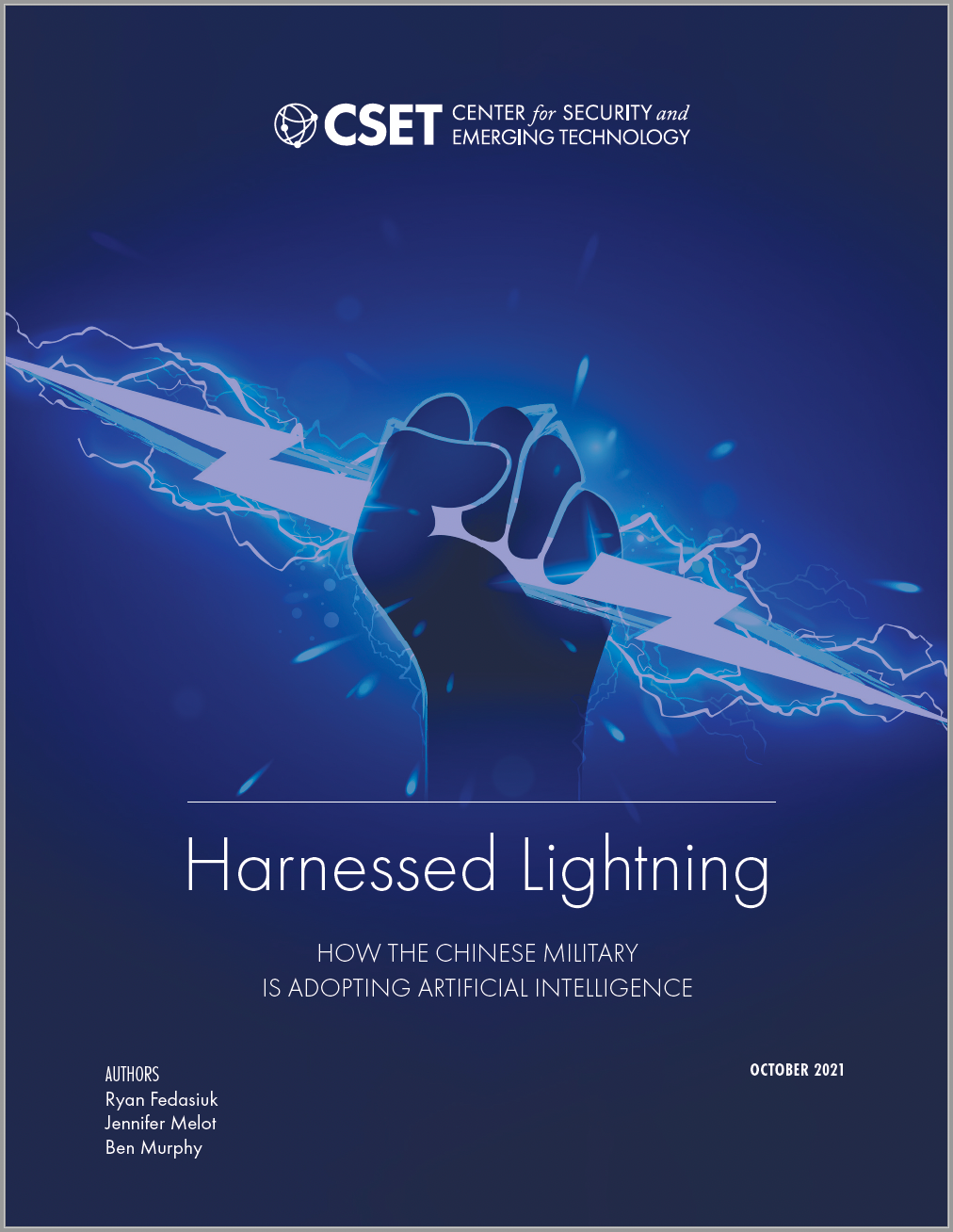Executive Summary
Artificial intelligence (AI) is progressing at lightning speed. What 10 years ago would have been considered science fiction—self-adapting computer algorithms with billions of parameters—is now a central focus of military and intelligence services worldwide. Owing in part to AI’s fast-paced development, most analyses of its military promise tend to focus more on states’ future aspirations than present-day capabilities. This is particularly true for the Chinese People’s Liberation Army (PLA), which has routinely made clear its desire to harness AI for military advantage, and which prefers to keep a close hold over its actual, technical capabilities. But as tensions mount between the United States and China, and some experts warn of an impending crisis over Taiwan, it is crucial that U.S. policymakers and defense planners understand the commercial off-the-shelf (COTS) AI technologies already available to the Chinese military.
This report offers a detailed look at the PLA’s adoption of AI by analyzing 343 AI-related equipment contracts, part of a broader sample of more than 66,000 procurement records published by PLA units and state-owned defense enterprises in 2020. The report identifies key AI defense industry suppliers, highlights gaps in U.S. export control policies, and contextualizes the PLA’s AI investments within China’s broader strategy to compete with the United States. Key findings include:
- Chinese military leaders are already procuring AI-related systems and equipment to prepare for “intelligentized” warfare, but AI so far represents a small fraction of overall purchasing activity.
- Approximately 1.9 percent of public PLA contracts awarded between April 2020 and November 2020 are related to AI or autonomy.
- While we can only estimate a floor for Chinese military AI spending, it is likely that the PLA spends more than $1.6 billion each year on AI-related systems and equipment.
- The PLA seems most focused on procuring AI for intelligence analysis, predictive maintenance, information warfare, and navigation and target recognition in autonomous vehicles.
- Whereas some PLA officers have expressed serious reservations about developing lethal autonomous weapons systems (LAWS), laboratories affiliated with the Chinese military are actively pursuing AI-based target recognition and fire control research, which may be used in LAWS.
2. Chinese leaders view AI as the key to transforming the PLA into a “world-class,” globally competitive military force. PLA advances in AI and autonomy will create new vulnerabilities for the United States and allied forces operating in the Indo-Pacific.
- The PLA hopes to use AI to generate asymmetric advantages vis-à-vis the United States, which it regards as a “strong enemy” (强敌), but also a role model for AI development.
- PLA units and military laboratories are focused on developing autonomous vehicles and surveillance systems in the undersea domain, where the United States has traditionally had a significant advantage.
- The PLA is stepping up investment in information operations and adaptive radar systems to jam and blind U.S. sensor and information networks, which PLA leaders judge to be particularly vulnerable.
- To compensate for vulnerabilities in its own networks, the PLA may adopt edge applications of AI (directly proximate to, or embedded within a platform) that can operate semi- or fully autonomously.
3. China’s military-civil fusion (军民融合) development strategy is helping the PLA acquire COTS technologies, both from private Chinese technology companies and sources outside of China.
- Most of the PLA’s AI equipment suppliers are not state-owned defense enterprises, but private Chinese tech companies founded after 2010.
- Although most suppliers are not state-owned, many have benefited from equipment, personnel, information, or capital provided directly or indirectly by the state.
- Of the 273 PLA AI equipment suppliers identified in this study, just 8 percent are named in U.S. export control and sanctions regimes.
- Some Chinese suppliers make a business out of sourcing foreign data or components and reselling them to sanctioned Chinese defense companies and PLA units.
- Lapses in due diligence and situational awareness may permit the Chinese military and defense industry to access capital and technology originating in the United States and partner nations, including advanced computer chips.
Supported by a burgeoning AI defense industry, the Chinese military has made extraordinary progress in procuring AI systems for combat and support functions. Within the next five to 10 years, the PLA will likely continue investing in AI to disrupt U.S. military information systems and erode the U.S. advantage in undersea warfare.
Although PLA investment in the technology appears substantial—roughly equivalent to that of the U.S. military—it remains to be seen how exactly AI might alter the balance of military power in the Indo-Pacific. In addition to renewed interest in counter-autonomy research, U.S. and allied efforts to regulate access to semiconductor devices may hinder the utility and availability of AI systems for the Chinese military.
The raw contract award data used in the production of this report can be found on CSET’s GitHub.
